Animal Crossing: Let’s Go To The City Review
Animal Crossing: Let’s Go To The City
Can the Wii incarnation of Animal Crossing live up to the legacy of its predecessor, or will we be crossing this off our Christmas wish lists?
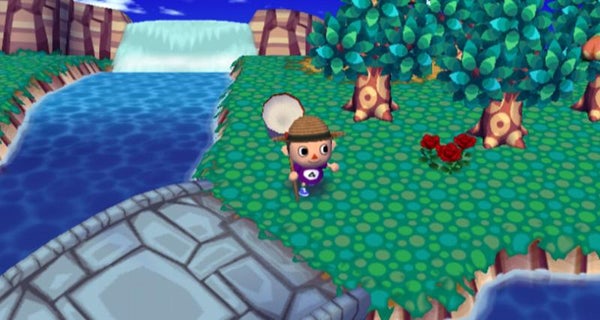
Verdict
Key Specifications
- Review Price: £29.35
Despite the huge success of Wii Fit and enduring popularity of the Wii, 2008 hasn’t been a vintage year for Nintendo’s long-term fans. Having endured 11 months with only Mario Kart Wii to keep us happy, we now have to face a Christmas with no new Mario game, no new Zelda, and not even a Metroid Prime to keep us busy. Instead, the best Nintendo has to offer is two titles: Wii Music and Animal Crossing: Let’s Go to The City. The former is interesting but also a little disappointing, while the latter is not the sort of game that’s going to please everyone. How much it does will depend on a) whether you can stand cutesy games of simulated social interaction and b) how many Animal Crossing games you have played before.
If you didn’t play Animal Crossing on the GameCube or the DS then you probably don’t know what the series is all about. Basically, you play a cutesy guy or gal who moves into a small woodland town populated by a range of bizarre cutesy animals. You soon find a little house to live in, but this leaves you in hock to the local shop owner (and notorious sub-prime mortgage lender), a pushy raccoon by the name of Tom Nook. To pay off your debts you can take on a few small jobs to get you started, then buy some tools and try your hand at some small-scale fishing, archaeology and agriculture.
Earn enough cash and you can pay off your mortgage then re-mortgage for a bigger place, not to mention change the décor and buy various appliances to suit your tastes. And while all this is going on you’ll make friends and your mark on the town, planting new trees and flowers, changing the flag and the town tune before donating funds for civic improvements. While you’re at it, you can design your own textiles, wear them as hats, t-shirts or umbrellas and leave them in the store for others to try out. You can even provide exhibits for the local museum or create your own constellations to view from the observatory. The more you play, the more the town becomes your own.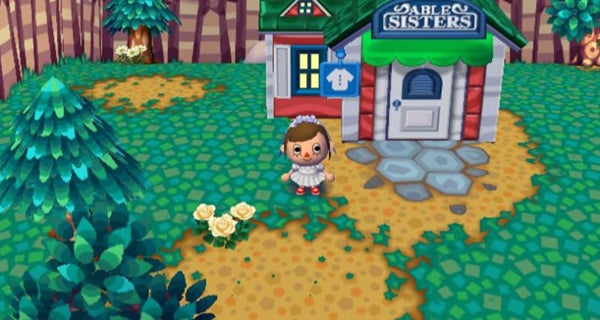
Doesn’t sound too thrilling, does it? Well, in a way it’s not. Animal Crossing is a relaxed affair, specifically designed to be enjoyed in small but regular doses rather than long stints. As the days and weeks go by new people move into town, some of the old ones move out, and activities like fishing and bug-catching competitions come and go. On the DS, Animal Crossing: Wild World was an innocent looking but worryingly addictive time-sink, keeping you coming back day after day – even if only for a few minutes at a time – until you finally got bored or kicked the habit. As up to four of you could share the same town on a single DS while playing at different times, it even worked as an odd sort of multiplayer game. You wanted to keep coming back just to see what your fellow players were up to.
Another major part of the pleasure of Animal Crossing – and one that makes it difficult to review – is that its riches only emerge with time. The game actually works in real time, taking the time from your Wii system clock and with the cast behaving and the town stores opening and closing according to what you might expect from the hour in your vicinity. Unlike, say, the Harvest Moon games or Final Fantasy: Crystal Chronicles – My Life as a King, there’s no way to advance time to the next day (though you can change the time and date if you need to play in the unsociable hours). You can’t rush things, but the longer you give the game, the more days turn into weeks and weeks into months, and the more festivals, competitions, advanced tools and visiting oddballs the game throws at you.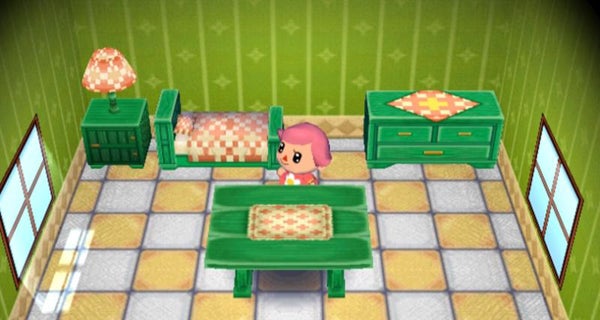
The hook in Animal Crossing is not so much what you can achieve as what you can discover. You’ll find a wandering ghost or a hovering flying saucer, you’ll swap stories with friends or family members, and before long everyone wants to uncover the next cool thing. It’s the opposite of one of those glamorous games that shows you everything in the first two hours then repeats until the end. To get the most from Animal Crossing, you have to keep exploring and going back to it long-term. Given time and patience, it can become an obsession.
If there’s one thing that Animal Crossing never gets enough respect for its personality and humour. Normally, a game this cutesy would be enough to turn most adult stomachs, but there’s something really strange and off kilter about the inhabitants of Animal Crossing that keeps the game interesting. These guys have neuroses, obsessions and emotional issues that you wouldn’t believe; it might look like Sonic the Hedgehog, but it’s actually closer to Twin Peaks. On top of this the game features some great referential wit. Will the kids understand that Old Lyle is an escapee from Glengarry Glenn Ross or chuckle at the grumpy asides from Phyllis, the night postal clerk? Probably not, but it makes the game surprisingly amusing for those of us over the age of ten.
In other words, what was good about Animal Crossing before still holds true now. So what does Let’s Go to the City bring to the Animal Crossing experience? Well, here we come to the game’s first problem: not a great deal. The graphics are a little more sophisticated than the DS or GameCube versions, but the big-headed character models retain their old, slightly primitive style and there’s not a lot of detail in the environments. Nobody buys Animal Crossing for visual splendour, but you can’t help thinking that Nintendo could have tried a little harder.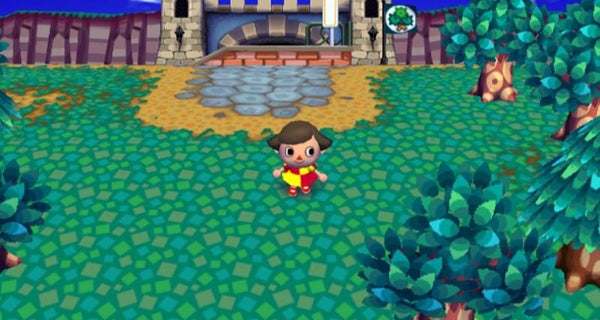
What’s more, Wii remote functionality is limited to a point-and-click interface and some isolated bits where you can shake the remote. In fact, the gameplay remains incredibly simple. You’ll spend most of your time wandering around, clicking on your neighbours to have a chat, clicking things in and out of the inventory and using your tools. Regular tasks like fishing and digging have no real complexity. To fish, for example, you merely equip the rod, face the water, click near a fish to cast your line then either press the A button or flick the remote upwards when the float sinks to show your catch is hooked. The only real element of skill is in the placement of the cast and in the timing. In short, if you’re looking for sophisticated gameplay, you won’t find it here. This is both the game’s strength and weakness. Either you settle in and enjoy the relaxed vibe and the amiable feel, or you don’t.
If you do, and you haven’t played Animal Crossing before, then you’ll probably get a lot from Let’s Go to the City. If you have played Animal Crossing, then you may be a little concerned about how little has changed. The town isn’t really much bigger than it was in previous incarnations, and new features and facilities are short on supply. If you have Wild World, you can even import your existing game and essentially treat Let’s Go to the City as a Wii extension. In fact, those changes which do exist are mostly irritating, like the addition of huge cliffs that force you to take circuitous routes where you would previously have walked straight from one place to another. Up to a point, this is fundamentally the same game.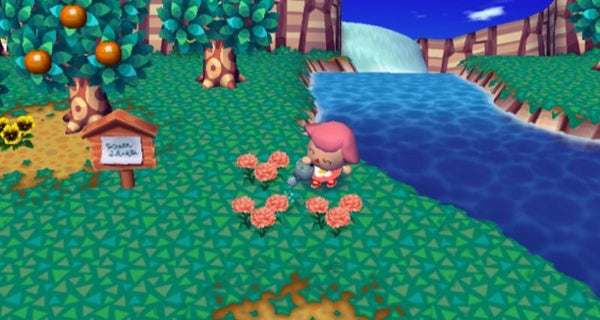
Of course, there is one major difference, and the clue is in the title. At any time you can now hop on a bus and take a trip into the big city (actually, more a medium-sized town square) where you’ll find a new range of shops and establishments to check out. We get a theatre, where – through the medium of some excruciating jokes – you can learn new expressions for your character. We get new, high-class clothing and furniture shops, a fortune telling and a physical version of the old Happy Room Academy where a fast-talking salesman introduces you to the latest trends in room design and décor.
Best of all, there’s a new beauty store where you can either equip your character with fashionable hair and make-up or give him/her the face and hairstyle from your own Mii. All of this stuff is great, but anyone expecting the city to be a major extension to the Animal Crossing world is going to come away disappointed; it’s a refinement rather than a revolutionary feature.
All this brings us neatly to Let’s Go to the City’s other problem: expectation. When Nintendo first announced the game, the talk of Animal Crossing and the Nintendo WiFi Connection service led a lot of us to put two and two together and make five, with the assumption that Animal Crossing was going to become some kind of MMO or Nintendo’s take on Second Life. It isn’t.
Don’t get me wrong; there are online features in there. You can invite people using friends codes or your Wii friends list to visit your town, with up to three visitors wandering around at once. You, in turn, can visit theirs. Some clever side-objectives involve you collaborating with a friend with their own town, and there’s an auction house in the city where rare items will periodically go up for sale. All the same, this is rather less than many of us hoped for.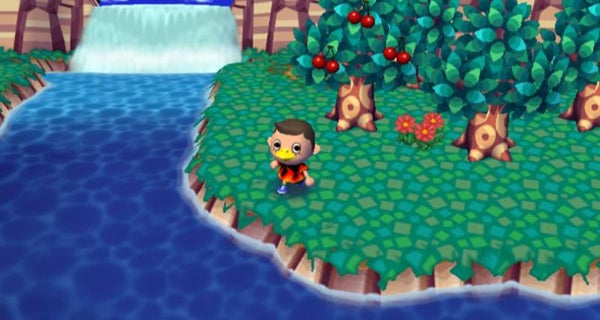
I can understand the concerns Nintendo has about online gaming – profanity and adult content are always going to be issues when the company courts a family audience – but being able to share a larger town with a wider community could have taken Animal Crossing to a whole new level. You can even see the potential of the city square as some kind of hub. We can’t really blame Nintendo for not taking this direction, but what we’ve got isn’t nearly as exciting.
That said, if you have kids and a Wii and the same goes for your grown-up friends or siblings, then Let’s Go to the City has the potential to make a nice family experience. You, the other parents and the various little blighters can meet up and explore each others towns and basically hang out, and there’s enough fun in the various activities to make it an enjoyable way to spend a rainy day together, in a virtual kind of way.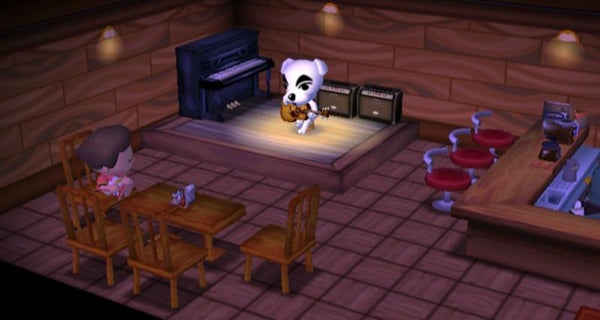
To make this more personal, you also have the option of buying Animal Crossing with a bundled Wii Speak microphone. It’s a small box that can be placed on or near the TV and connects up to the Wii via USB, and can be used for voice chat either in Animal Crossing or using the dedicated Wii Speak channel. It’s a neat little unit, easy to use and setup, and it also does a fine job of eliminating background noise – including the game’s own soundtrack – from the mix. All the same, you need friends with the same setup to really make it worthwhile.
In the end, this is a very hard game to score. Anyone with Wild World on a DS is at risk of being disappointed by the lack of major new features, while newcomers to the series could easily be underwhelmed in the first few hours. At the same time, there is something oddly compulsive and yet relaxing about the whole thing; in our household it’s become part of the daily ritual, with tales of new discoveries swapped over breakfast and evening meals, and weird little practical jokes (damn those quicksand seeds) being played on hapless family members.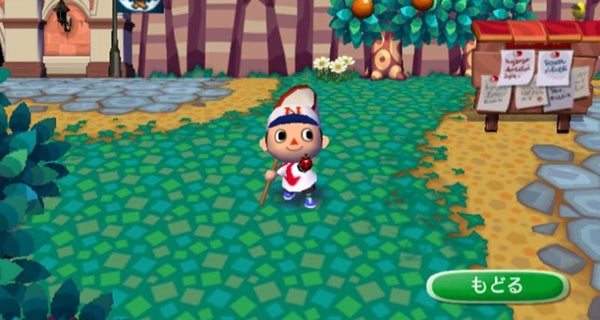
Arguably, the Harvest Moon games (not to mention WiiWare’s My Life as a King) offer a similar but more goal-oriented experience that might suit single players better, while the DS is perhaps a better platform for a game you might want to quickly sample whenever you have a spare moment. All the same, if the lure of cutesy, quirky, smalltown life sounds appealing, then Animal Crossing will give you weeks – even months – of gentle pleasures.
Verdict
Let’s go to the City is an entertaining game for Animal Crossing newbies who can adjust to the relaxed pace of its world, but not a major step on for those who have played the game before. The online features are mildly disappointing and, arguably, the dip-in, dip-out gameplay is better suited to the DS.

